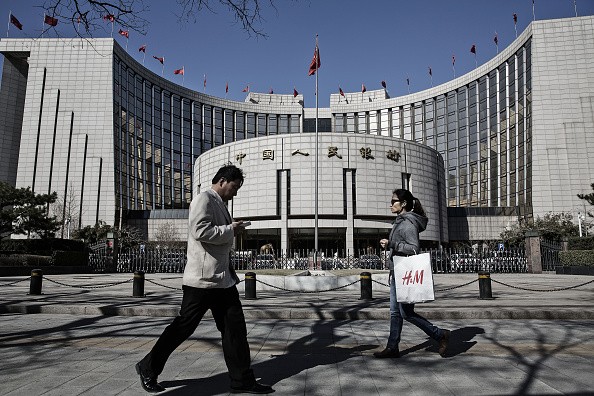The People's Bank of China (PBOC) is using seven liquidity tools, aside from benchmark rates, to tackle various monetary and economic challenges, which analysts said is causing volatility and uncertainty in the markets.
Bloomberg said that China's monetary policy looks like an alphabet soup, with various tools to deal with a slowing economy, the declining yuan and rising debt.
According to the report, PBOC has created a new facility in addition to three other liquidity facilities, aside from its most high-profile tools, which are benchmark borrowing cost and the reserve-requirement ratio (RRR).
The report said that since 2015 when the country sought to liberalize interest rates, it has started modernizing its monetary toolbox. But the process caused market swings which resulted in a bond selloff that pushed yields to a 1 1/2-year high.
"They're trying to juggle way too many balls," Cliff Tan, East Asian head of global markets research at Bank of Tokyo-Mitsubishi UFJ Ltd. in Hong Kong, said. "What you end up with is very volatile policy because the policy mix doesn't imply any one particular rate. It depends on which objective you're trying to hit on that particular day."
Alphabet Soup
PBOC uses benchmark borrowing cost and the reserve-requirement ratio (RRR) as part of its regular monetary arsenal but in recent years, it managed liquidity with five other liquidity tools.
- Open-market operation - used daily for short-term adjustment of money supply
- Medium-term Lending Facility - used for longer term adjustments
- 28-day Temporary Liquidity Facility - used by the central bank when it tried to prevent a cash crunch before the Lunar New Year holidays
- Pledged Supplementary Lending and re-lending - used to provide funds for specific sectors
- Short-term Liquidity Operations - used to provide short-term loans of seven or fewer days
Some Chinese investors even gave some tools amusing nicknames, based on Sichuan dishes, with Chinese consonants to match the English abbreviations. For MLF, they call it numb and spicy noodles ("ma la fen"), for the Standing Lending Facility ("suan la fen"), sour and spicy noodles, and TLF ("tian la fen"), sweet and spicy noodles.
Mixed Reactions
According to Logan Wright, Hong Kong-based director of China markets research at Rhodium Group LLC, the PBOC uses this combination of monetary policy to reduce market leverage and maintain the rates for borrowers.
Wang Tao, an economist at UBS Group AG, however, said that the use of various market tools could affect banks differently and could cause greater volatility in the market. It could also keep global investors guessing about the policy intention of the tools.
Wright added the use of these instruments may also result in larger market swings that could affect funding costs, interest rates and bond yields.
Chi Lo, a senior economist at BNP Paribas Investment Partners in Hong Kong, said that China's indecision on which policy rate to use could destabilize the balance between money supply and the country's economic goals.
"Experiments with different interest rates from different instruments are needed to find the best structural fit between interest rates and the economic goal variables in order to establish the corridor," Chi said. "But the answer to why it creates so many lending facilities that do not differ much from each other remains a mystery."



























